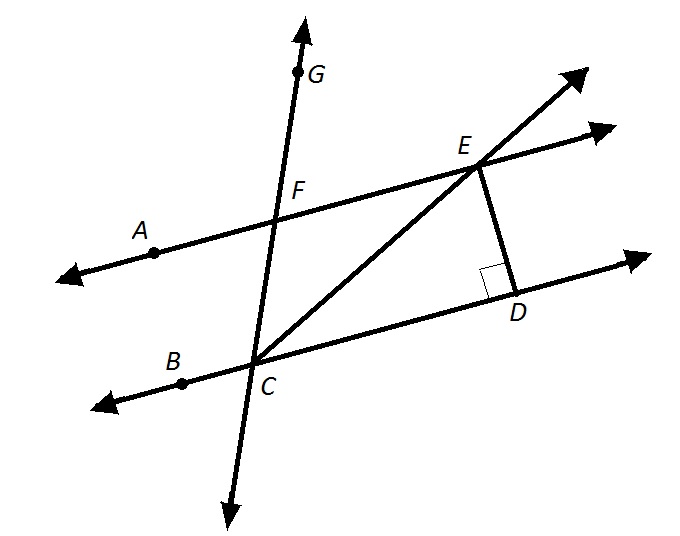All GED Math Resources
Example Questions
Example Question #231 : 2 Dimensional Geometry
You want to build a garden in the shape of a right triangle. If the two arms will be 6ft and 8ft, how much area will the garden take up?
You want to build a garden in the shape of a right triangle. If the two arms will be 6ft and 8ft, how much area will the garden take up?
To find the area of a triangle, use the following formula.
Note that in a right triangle, our two arms correspond to our base and our height. Furthermore, it does not matter which is which, because when we multiply, order does not matter.
So, to find our area, simply plug in and simplify.
So, our answer is 24 ft squared
Example Question #231 : 2 Dimensional Geometry
What is the area of an equilateral triangle that has a perimeter of ? Round your answer to the nearest hundredths place.
Start by finding the length of a side of the triangle.
Next, recall how to find the area of an equilateral triangle.
Plug in the length of the side to find the area.
Example Question #51 : Triangles
If the height of a triangle is twice the length of the base, and the base length is 3.5 inches, what is the area of the triangle?
First we need to know that the formula for area of a triangle:
We know that our base is 3.5 inches, and our height is twice that, which is 7 in.
Now we can plug in our base and height to the equation
Multiply and solve
Example Question #231 : 2 Dimensional Geometry
What is the area of a triangle with a height that is three times the length of the base, if the base is 4cm?
First we need to recall the formula for area of a triangle:
We know that our base is 4cm, and our height is 3 times the length of the base, since 4x3=12 we know that our height is 12cm
Now we can plug in our numbers
First we multiply 4 and 12
Next we distribute the fraction which is the same as dividing in half
Notice our answer is in centimeters since we multiplied two terms measured in centimeters
Example Question #52 : Triangles
Which of the following can be the measures of the three angles of an acute isosceles triangle?
For the triangle to be acute, all three angles must measure less than . We can eliminate and for this reason.
In an isosceles triangle, at least two angles are congruent, so we can eliminate .
The degree measures of the three angles of a triangle must total 180, so, since , we can eliminate .
is correct.
Example Question #1 : Angles And Triangles

Note: Figure NOT drawn to scale.
Refer to the above triangle. Evaluate .
The degree measures of a triangle total , so
Example Question #59 : Triangles

Note: Figure NOT drawn to scale.
Refer to the above figure. Evaluate .
The degree measures of the interior angles of a triangle total , so, if we let be the measure of the unmarked angle, then
Three angles with measures together form a straight angle, so
Example Question #2 : Angles And Triangles

Figure drawn to scale.
Refer to the above diagram.
Which of the following is a valid description of ?
Acute
Right
Obtuse
Equiangular
Obtuse
One of the angles of - namely, - can be seen to be an obtuse angle, as it is wider than a right angle. This makes , by definition, an obtuse triangle.
Example Question #3 : Angles And Triangles

Refer to the above diagram.
Which of the following is a valid description of ?
Equiangular
Obtuse
Acute
Right
Right
One of the angles of - namely, - is marked as a right angle. This makes , by definition, a right triangle.
Example Question #61 : Triangles
Which of the following follows from the fact that ?
A congruency statement about two triangles implies nothing about the relationship between two angles of one of the triangles, so is not correct.
Also, letters in the same position between the two triangles refer to corresponding - and subsequently, congruent - angles. Therefore, implies that:
Of the given choices, only is a consequence. It is the correct response.
Certified Tutor
Certified Tutor
All GED Math Resources
































































































